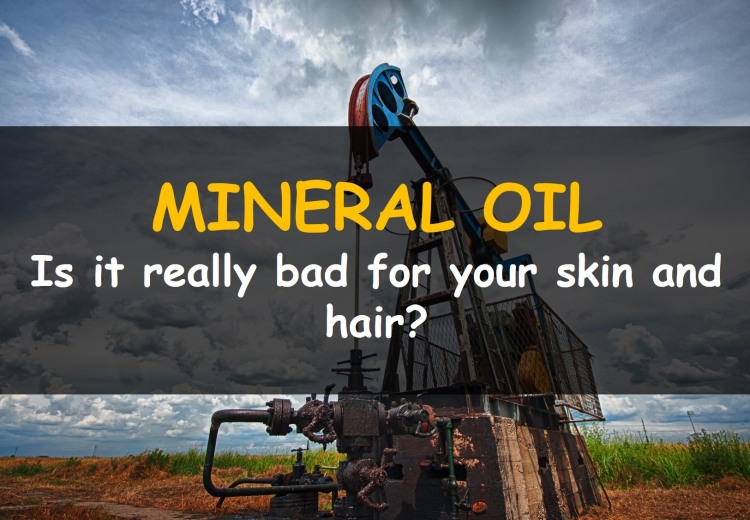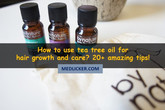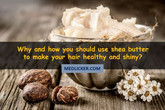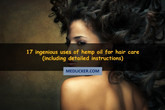Is Mineral Oil Bad for Skin and Hair?
Do you want to know about mineral oil, its health benefits and some frequently asked questions about mineral oil? If so, then you need to read this article as it will tell you the basics of mineral oil, its health benefits and some frequently asked questions related to mineral oil.
Mineral oil: what is it?
When petroleum is passed through a distillation process for making petroleum products, mineral oil is obtained as a side product. The production of mineral oil is in a large quantity and it is without any defined color or taste. 0.8 g/cm3 is the density of mineral oil. In the oils, there is a difference in their refining process. Cosmetics is the application of refined mineral oils whereas car oils is the application of unrefined mineral oils.
Mineral oil is also used in cooking. They also condition the leather materials. They are also used as wood conditioner and sealant. Sometimes as a laxative also, it is used. Sometimes, as an oil-stain remover, it is used. Mineral oil is also present in body lotions and cold creams.
Manufacturing of mineral oil
Now let us see how mineral oil is manufactured. There are different forms of petroleum. Smaller molecular chains to black hydrocarbon chains are these types. Crude oil isn’t a simple molecule; it contains a combination of many compounds of hydrogen and carbon. There can be as many as 60 carbon atoms or only 1 carbon atom, like in methane.
First of all, through a furnace, crude oil is passed. In the furnace, it is vaporized and heated. After that, the crude oil is made to pass through a fractionating column. The different hydrocarbons are separated based on their boiling points. The temperature is kept higher than room temperature. On provision of heat, the hydrocarbons are vaporized. Now, till they are liquefied, they keep on cooling. The conversion from gas to liquid mainly occurs on the basis of their molecular sizes.
On the basis of molecular mass, the crude oil is separated. The hydrocarbons which will come on top will have the smallest number of carbon atoms. From these hydrocarbons, gasoline is made. Jet fuel and Kerosene oil is made from the hydrocarbons containing 11 or 13 carbon atoms. Gas oil and diesel are made from carbon atoms containing 14 to 25 carbon atoms. Lubricating oil is made from the hydrocarbons containing 26 to 40 carbon atoms. Asphalt products are made from the hydrocarbons which contain more than 40 carbon atoms.
Compounds have to be refined, after the distillation process. In two ways, refining can take place. Separation process is the first step. This step involves the making of two by products, which are a desired and an undesired product. Conversion process is the next step, in which pressure and heat is used to convert the undesirable products into desirable ones.
Extraction process
The extraction process of mineral oil is a bit lengthy and it is described in detail below:
1. Deasphalting process
Residue is converted into two products and taken from the bottom. Tar is one of the compounds; the other compound is the one having higher boiling point. The name of this mineral is deasphalted oil.
2. Extraction of solvent
In solvent extraction, by the process of liquid extraction, the compounds which aren’t needed and other undesirable smells, are eliminated. Furfural, Sulphur dioxide and phenol are the commonly used solvents for the extraction of solvent. The compounds which are made as a result have good smell. This is also the way of extraction of fuel oil.
3. Dewaxing process
To make the neutral oil survive low temperature, it is passed through a dewaxing process. The two products which are made as a result of the dewaxing process are dewaxed oil and a byproduct wax. Paraffins and naphthanes are the constituents of dewaxed oil whereas the byproduct wax contains only paraffins. For many lubricants, this neutral oil passed through the dewaxing process is the base compound.
4. Hydrofinishing
In the process of hydrofinishing a chemical reaction takes place which creates a change in the polar compound in the oil. In this reaction hydrogen is involved. As a result of this process, the chemical becomes more stabilized. The resultant product is also a bit light. In hydrofinishing process, the temperature and pressure is applied to determine the quality of the product.
The process of conversion
The process that takes place after the extraction process, is the conversion process, which has been stated below:
1. Hydrocracking process
In this process, the temperature and pressure are kept very high and in this high pressure and temperature, the mineral oil is passed through a chemical process in the presence of a hydrogen and a catalyst. Hydrogen sulphide, water and ammonia are also removed by this reaction.
2. Hydrodewaxing process
This process is a bit similar to the hydrocracking process. In this process, a chemical reaction takes place in the presence of hydrogen and a catalyst. This coverts the paraffin structures into branched paraffin structures.
3. Hydrotreating process
The molecules become unsaturated because of their breaking in the two previous steps. So, the molecules are reacted with hydrogen to make them saturated. The main benefit of these saturated molecules is that they have the ability of resisting the oxidation process. Also, these molecules are more stable.
Although the conversion process produces better quality mineral oil than the extraction process, the cost of conversion process is more than the extraction process. The mineral oil passed through the conversion process is charged more from the buyer. However, it is a good trade off because the quality of mineral oil passed through conversion process is better.
Composition of mineral oil
Now let us look at the chemical composition of mineral oil. In a mineral oil, hydrocarbons, alkanes and paraffins are present in a combination. The composition of mineral oil is a bit similar to petroleum jelly or white mineral oil. However, it is more applicable than both of them as it is liquid petroleum. Just like white mineral oil, it is insoluble in alcohol and water.
Uses of mineral oil
Now let us have a look at the uses of mineral oil. Mineral oil is used all over the world for its benefits. Many physical and mental benefits can be obtained through mineral oil. It is also used in the treatment of certain diseases. You can also mix it with other oils to get better results.
Some major benefits of mineral oil have been mentioned below:
1. Treatment of scalp condition
By the use of mineral oil, different scalp conditions like scalp psoriasis and dandruff are treated. Mineral oil eliminates these health conditions. For using mineral oil, apply it on the top of your head, and cover your head with a plastic sheet of some kind. After some time, your condition will be treated. Inflammation and dryness on the head are also treated by this condition.
2. Dryness of skin
Dry skin is a common problem faced by people these days. Some people face a common skin condition known as psoriasis. Big spots of dry skin are formed in this disease. Luckily, this condition can easily be treated by mineral oil. From the skin surface, mineral oil evaporates water. It also acts as a moisturizer for skin. After taking a bath, apply mineral oil on your hair. The bottom line is that many skin conditions can be treated by using mineral oil.
3. Constipation relief
Constipation can be treated by the use of mineral oil. It is used as a laxative and can be taken through the mouth or rectum. Mineral oil is actually a lubricant. It helps in the bowel movement and the softening of the stool, when taken orally (1). The stool this way gets moisturized and easier to pass. The mineral oil has the same effect when taken through the rectal route. Because some people find it difficult to take the mineral oil orally, they prefer the rectal route.
4. Mineral oil: benefits for hair
There are many benefits of mineral oil for hair. Two of the most prominent benefits have been mentioned below:
- Some research has indicated that mineral oil helps in preventing the spreading of moisture and forms a kind of barrier around the hair. This reduces the dryness and falling of hair; it also helps in confining the moisture. In a research, it was found out that this effect was found on all the hair, on which the oil was applied. No effect was seen in the hair without the application of mineral oil. Also, moisture isn’t absorbed by hair in damp conditions. This provides protection against the curls, which are generally formed in hot and humid conditions. The thing that is interesting is that as time passes, water will start accumulating in the hair. Hydrophobic mineral oil will keep the water out for the most time. So if don’t want water to accumulate in your hair, you should go for mineral oil.
- For people who want curly hair, mineral oil is a good choice. Through mineral oil, curls are formed and retained in the hair. The key to obtain curls in the hair is to apply as much mineral oil as possible to the hair. What happens here is that the adhesion forces bind the hair and capillary and they form curls above one another and bind together. Curling of hair is best obtained by the use of mineral oil; other oils don’t produce the desired result.
Tips for using mineral oil
Mineral oil can be applied through a variety of ways. It can be taken orally, through the rectal route or through mineral oil makeup. Below are mentioned the different ways on how to use mineral oil:
1. Oral mineral oil
First of all, you need to keep in mind that you should never take mineral oil without the guidance of a doctor. Take mineral oil and put it in your mouth. The doctor will guide you through this. However, if you are trying it on your own, make sure that you read all the instructions given on the instruction manual. Go and ask a pharmacist if you are still unclear about the method. It is all the more important that you intake the right dosage of mineral oil. Don’t use a table spoon for taking mineral oil. Special spoons are available in the market for taking it. Go and buy one of them. A precaution that you need to take care of is that never ever take the mineral oil after a meal. Always take it when your stomach is empty. The reason behind this is that mineral oil can react with different vitamins like vitamin A and D, and can cause complications. Another thing is that, if you haven’t consulted a doctor, don’t take this medicine. There is a downside of mineral oil when taken orally. It is that the mineral oil, when taken with other medications, minimizes their effect. So, it is best to take it at least two hours before or after your other medications. Also, after taking mineral oil orally, don’t go to bed for some time.
2. Taking mineral oil through rectal route
Just like oral mineral oil, avoid taking mineral oil through the rectal without the guidance of a doctor. If you don’t have any guidance, read the instructions carefully and follow them exactly as they are. There is special rectal mineral oil available in the market. Buy it and never take it orally. It’s specifically made for taking through the rectal route.
Now let us see how to mineral oil through the rectal route. First of all, lie down on any side, left or right. Now bend your knees slightly. If someone is assisting you in giving the mineral oil, keep your head towards the floor. Stay still while mineral oil is being given to you. If no one is assisting you, open the tip of the injector and place it softly into the rectum. Now slowly empty the bottle. You don’t need to hurry, just keep on emptying the bottle slowly. After about 15 minutes, there will be a movement in your bowels. Don’t get up until you get a bowel movement. If after half an hour, no bowel movement is produced, contact your doctor. Also, you need to wait for 24 hours before the next mineral oil.
3. Mineral oil make up
Now let us see how to apply mineral oil make up. Many people have observed that mineral oil make up gives better results than traditional make up. The interesting thing is that no skin conditions are caused by mineral oil make up. But remember, that applying mineral oil make up is a skill which you need to learn beforehand. The following are some tips to apply mineral oil makeup.
- Moisturize – It’s a good idea to add moisture to your face, before applying the mineral powder. The reason behind this is that mineral powder won’t have much effect on dry skin. On your face, add a lotion. Now wait for about 10 minutes before applying mineral oil makeup.
- Put mineral oil on the cap of jar – Putting a limited amount of mineral oil on the cap of jar is important as this will help you in not using too much oil. If you feel that the mineral oil isn’t enough, you can always add more later on.
- Apply eye liner – Applying an eye liner is important in the sense that it gives definition to the eyes. Another reason of using eye liner is to get rid of any oil that has settled on your eyes.
- Applying enhancer to other areas – While you are doing your make up, you can apply the enhancer to the some darkened areas of the body, like under the eyes. The mineral oil makeup will cause the dark spots to disappear.
- Get rid of extra powder from the brush – The next thing that you need to do is that you need to get off extra oil from the brush. One thing is important to mention here and it is that you need to buy a good quality brush. A low quality brush won’t give you the desired effect.
- Apply the brush on skin – Now you need to apply the brush on your skin in circular motions. This will give more definition to your skin. Also, it will help the oil stick to the surface of the skin. The oil will adhere if you spend more time in brushing your skin.
- Apply setting powder – Now it’s time to apply the setting powder. There are different setting powders of mineral oil present in the market. Some people skip this step. That’s why their makeup doesn’t shine. When the setting is applied, the makeup looks more natural and sticks for a longer time.
4. Drinking mineral oil
Mineral oil can be taken as a drink. To use mineral oil as a drink, buy a bottle of mineral oil from the market. Now add it in a small amount, according to the indicated dosage, in 2 oz. of juice or water. Drink it about two hours before bed time. Experts have recommended that it’s best to add mineral oil in water.
5. Applying mineral oil on hair
Now let us see how to apply mineral oil on hair. To apply mineral oil on hair, buy a bottle of mineral oil from the market. Take the bottle and open the lid. Now slowly squeeze the oil on your hair, just like shampoo. After that, mix it properly and add a plastic sheet on the hair. Keep it overnight and wash your hair in the morning.
Mineral oil FAQs
Some of the frequently asked questions about mineral oil are featured below:
Q1. Does mineral oil clog pores?
Mineral oil can cause acne and block pores. However, if the mineral oil is of good quality, meaning that it is more refined, it might not block pores. But it is impossible to know the extent to which a mineral oil is refined. If you are already suffering from skin conditions, then even refined mineral oil will clog pores.
Q2. Is mineral oil contaminated?
The simple answer to this question is that yes, mineral oil is contaminated. A report published in 2011 showed that mineral oil is contaminated with other toxins, which can lead to the development of cancer in the body (2). So whether it is used as a lubricant oil or as a cosmetic, the main thing is that it is contaminated.
Q3. Is mineral oil carcinogenic?
Research has indicated that some kinds of mineral oil are carcinogenic. In a study, in which twelve refined minerals were tested for their carcinogenic properties, it was proved that about 6 of them had mild carcinogenic properties (3).
Q4. Is mineral oil contraindicated for fecal impaction?
No mineral oil isn’t contraindicated for fecal impaction. First you should know what fecal impaction is. These are actually hard bowel movements which make the passing of stool difficult. Mineral oils are helpful in this aspect and help in the softening of bowel movement. This helps the stool to pass smoothly and without any difficulty.
Q5. Is it possible to use mineral oil as a laxative?
Laxative is something which helps in the emptying of the bowels. Mineral oil can be taken as a laxative. It can either be taken orally or through the rectal route. It’s important to follow the instructions given by the doctor. Mineral oil is used as a laxative for the treatment of constipation.
Q6. Why is mineral oil used in body lotions?
In different body lotions, mineral oil is used. Not only in body lotions, it is also used in other types of cosmetics. The main reason to use mineral oil in body lotions is that it helps to get rid of the dryness of the skin. Moreover, it also helps with certain skin conditions.
The bottom line
This article features detailed information about mineral oil and its benefits (and possible side effects) for health care and beauty industry. Some frequently asked questions about mineral oils have also been mentioned in the end.
Now the question arises whether mineral oil is bad for skin and hair or not?
Although there are some benefits of mineral oil for hair and skin, some research has indicated that mineral oil has no effect on prevention of hair damage (4). Also some kinds of mineral oils like hydraulic mineral oil and polyalphaolefin hydraulic fluids can create serious damage to the skin. A research showed that when a human being was exposed to hydraulic mineral oil, his hands developed weakness. In another research, animals were given polyalphaolefin hydraulic mineral oil. The skin of these animals swole badly (5). So, the bottom line is that mineral oil, undoubtedly, has several benefits but must always be used in moderation. Excessive use can be dangerous and you should always ask your physician for advice before attempting to use mineral oil for any treatment.
| Written by: | Michal Vilímovský (EN) |
|---|---|
| Education: | Physician |
| Article resources: | See numbered references within the article. |
| Image resources: | Dollarphotoclub.com |
| Published: | April 24, 2015 at 10:05 AM |
| Next scheduled update: | April 24, 2017 at 10:05 AM |
Related articles
Get more articles like this in your inbox
Sign up for our daily mail and get the best evidence based health, nutrition and beauty articles on the web.







Ache in left arm that you should not ignore
Alkaline water dangers: why you should not drink it
How to Avoid Sleepiness While Studying?
23 Foods That Increase Leptin Sensitivity
Low dopamine (e.g. dopamine deficiency): causes, symptoms, diagnosis and treatment options
Swollen taste buds: the ultimate guide to causes, symptoms and treatment
Thin endometrial lining: causes, symptoms, diagnosis and treatment
Pimples inside nose: the complete guide
Holes in tonsils: definition, symptoms, treatment and prevention
How to deal with an ingrown hair cyst
Allegra vs. Zyrtec vs. Claritin
Allergy to penicillin and alternative antibiotics
How to get rid of phlegm (excessive mucus) in throat? Detailed guide to medical and home remedies, symptoms and causes
What causes stomach ache after meals?
Liver blood test results explained